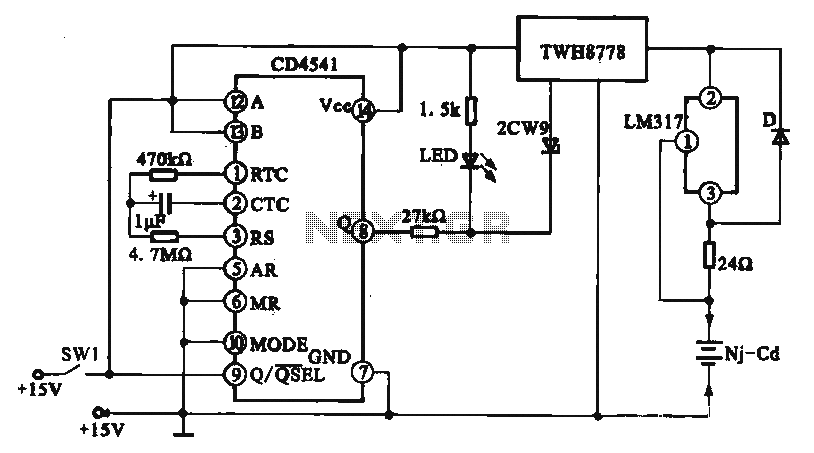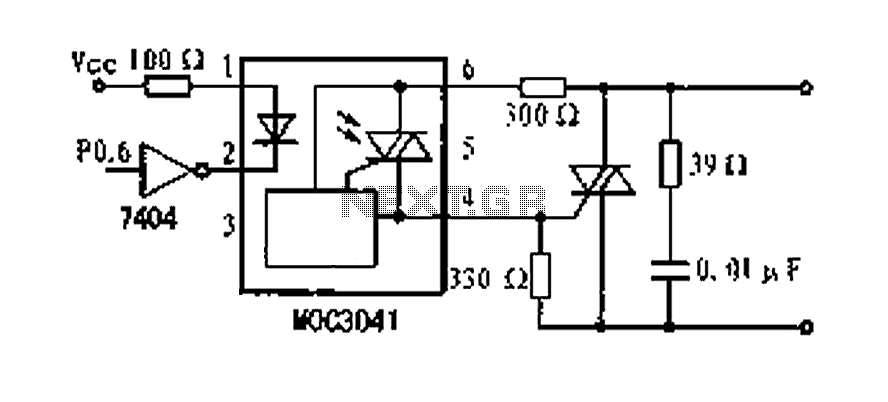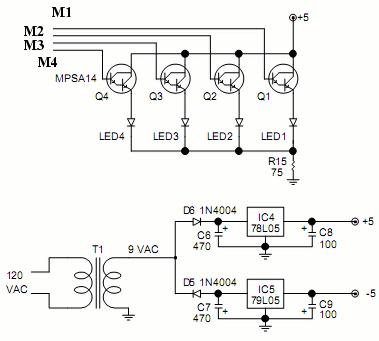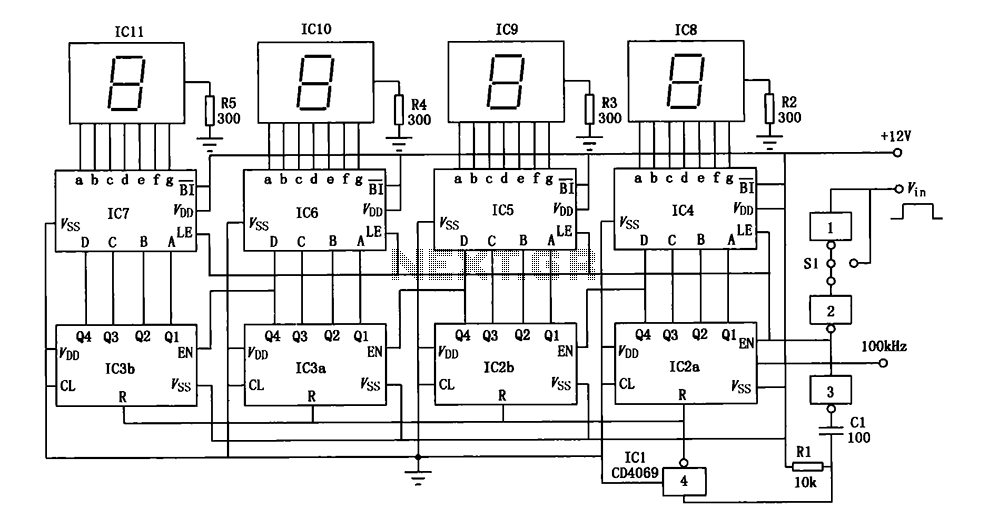
Constant current charging circuit long delay

A constant current charging circuit with a long delay is implemented using the CD4541, which constitutes a constant current charging circuit suitable for Ni-Cd batteries. Upon powering on, the CD4541 output at pin high activates the TWH8778 electronic switch, allowing a constant current source formed by the LM317 to charge the battery. After more than ten hours, the CD4541 output goes low, turning off the TWH8778 and indicating that charging is completed.
The circuit operates by utilizing the CD4541 timer IC, which is configured to provide a long delay before switching states. This timer is essential for applications requiring precise timing, such as in the charging of Ni-Cd batteries. The CD4541 is capable of generating a high output signal for a predetermined duration, which in this case is set for over ten hours, ensuring that the battery receives a stable and consistent charge during this period.
The LM317 voltage regulator is employed to create a constant current source for charging the battery. The LM317 is adjustable, allowing for the output current to be set according to the specific requirements of the Ni-Cd battery being charged. This feature is crucial, as charging Ni-Cd batteries requires careful control of the current to prevent damage or reduced lifespan.
When the circuit is powered on, the output from the CD4541 at pin high activates the TWH8778 electronic switch. This switch is responsible for connecting the LM317 to the battery, enabling the charging process. The TWH8778 is a low on-resistance MOSFET switch, which minimizes power loss during operation and enhances efficiency.
After the designated charging period, the output from the CD4541 transitions to a low state. This change deactivates the TWH8778 switch, effectively disconnecting the LM317 from the battery and signaling that the charging process is complete. The design ensures that the battery is charged for the appropriate duration while also providing a simple and effective means of monitoring the charging state through the CD4541's output.
Overall, this constant current charging circuit is well-suited for applications requiring reliable and efficient charging of Ni-Cd batteries, with built-in timing features that enhance usability and safety.Constant current charging circuit long delay Shown as a long delay using CD4541 constitute constant current charging circuit, suitable for Ni-Cd batteries. When the power is turned on after, CD4541 @ pin output high TWH8778 electronic switch is turned on, the
constant current source formed by the LM317 to charge the battery. After more than ten hours later, CD4541 output goes low. TWH8778 power off, charging is completed.
The circuit operates by utilizing the CD4541 timer IC, which is configured to provide a long delay before switching states. This timer is essential for applications requiring precise timing, such as in the charging of Ni-Cd batteries. The CD4541 is capable of generating a high output signal for a predetermined duration, which in this case is set for over ten hours, ensuring that the battery receives a stable and consistent charge during this period.
The LM317 voltage regulator is employed to create a constant current source for charging the battery. The LM317 is adjustable, allowing for the output current to be set according to the specific requirements of the Ni-Cd battery being charged. This feature is crucial, as charging Ni-Cd batteries requires careful control of the current to prevent damage or reduced lifespan.
When the circuit is powered on, the output from the CD4541 at pin high activates the TWH8778 electronic switch. This switch is responsible for connecting the LM317 to the battery, enabling the charging process. The TWH8778 is a low on-resistance MOSFET switch, which minimizes power loss during operation and enhances efficiency.
After the designated charging period, the output from the CD4541 transitions to a low state. This change deactivates the TWH8778 switch, effectively disconnecting the LM317 from the battery and signaling that the charging process is complete. The design ensures that the battery is charged for the appropriate duration while also providing a simple and effective means of monitoring the charging state through the CD4541's output.
Overall, this constant current charging circuit is well-suited for applications requiring reliable and efficient charging of Ni-Cd batteries, with built-in timing features that enhance usability and safety.Constant current charging circuit long delay Shown as a long delay using CD4541 constitute constant current charging circuit, suitable for Ni-Cd batteries. When the power is turned on after, CD4541 @ pin output high TWH8778 electronic switch is turned on, the
constant current source formed by the LM317 to charge the battery. After more than ten hours later, CD4541 output goes low. TWH8778 power off, charging is completed.





